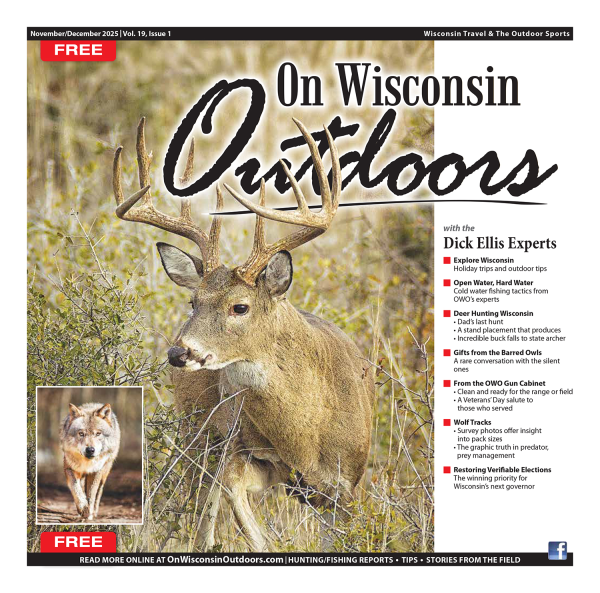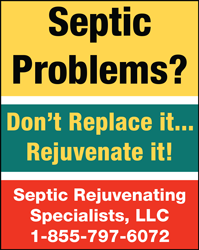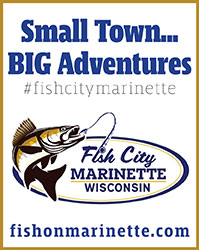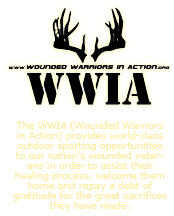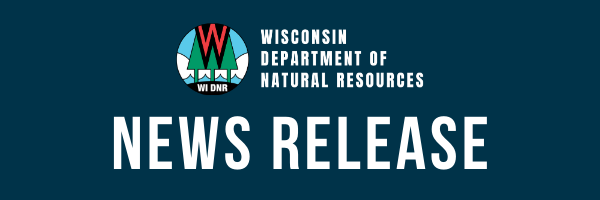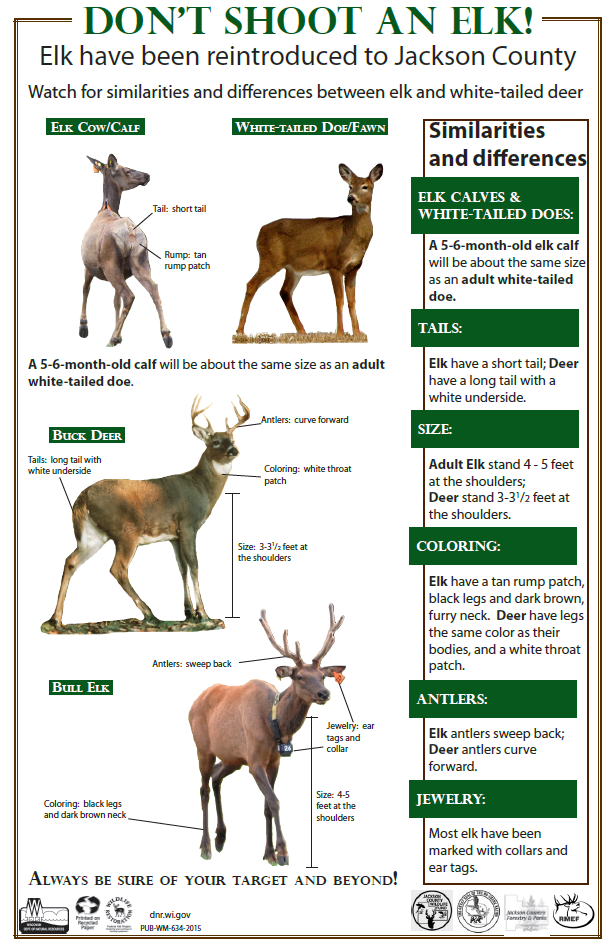| NEWS RELEASE: Reminder: ‘Protecting The People – Safe Drinking Water For All’ Webinar Oct. 12 |
| 10/11/2021 |
| |
|
FOR IMMEDIATE RELEASE: Oct. 11, 2021
Contact: DNR Office of Communications
DNRPress@wisconsin.gov
Reminder: ‘Protecting The People – Safe Drinking Water For All’ Webinar Oct. 12
MADISON, Wis. – The Wisconsin Department of Natural Resources (DNR) is reminding the public that the last of three Safe Water For All educational webinars, Threats on Tap: Marginalized Communities, will take place 12-1 p.m. on Tuesday, Oct. 12.
The webinar series is part of the Safe Water For All Campaign announced in July that is dedicated to educating the public on the leading drinking water contaminants, including PFAS, nitrates, lead and their impact on your health.
Wisconsin has a long history of protecting the state's waters, and even led the nation in drinking water protection with the passage of the 1983 groundwater law. Approximately two-thirds of people living in Wisconsin get their drinking water from groundwater. Adequate supplies of uncontaminated groundwater are crucial not only for our health, but also for our breweries, agricultural operations and cutting-edge industries in Wisconsin. Hear how Wisconsin is working to protect your health and what you can do to get involved.
Speakers include Steve Elmore, DNR Drinking Water and Groundwater Program Director, Jennifer Hauxwell, Associate Director at the University of Wisconsin Aquatics Sciences Center and Jon Meiman, Chief Medical Officer at the Wisconsin Department of Health Services. Bruce Rheineck, DNR Groundwater Section Chief, will moderate the session.
Gov. Tony Evers declared 2019 the Year of Clean Drinking Water to address the fact that not all Wisconsinites have access to safe, clean drinking water. Gov. Evers directed the DNR and DHS, the agencies entrusted with protecting Wisconsin’s health and water resources, to strengthen water quality standards for nitrate, PFAS and lead.
Safe Water For All Panel Series
Protecting The People - Safe Drinking Water For All
12 p.m. Oct. 12
Wisconsin has a long history of protecting the state's waters and even led the nation in drinking water protection with the passage of the 1983 groundwater law. Approximately two-thirds of people living in Wisconsin get their drinking water from groundwater. Adequate supplies of uncontaminated groundwater are crucial not only for our health but also for our breweries, agricultural operations and cutting-edge industries in Wisconsin. Hear how Wisconsin is working to protect your health and what you can do to get involved.
Speakers:
Steve Elmore, Drinking Water & Groundwater Program Director, DNR
Jennifer Hauxwell, Associate Director, UW-Madison Aquatic Sciences Center
Jon Meiman, Chief Medical Officer and State Occupational and Environmental Disease Epidemiologist, Wisconsin Dept. of Health Services
Watch via the DNR’s YouTube Channel here.
|
|
|
|
|
 |
| NEWS RELEASE: Help Slow The Spread Of CWD |
| 10/11/2021 |
| |
|
FOR IMMEDIATE RELEASE: Oct. 11, 2021
Contact: Amanda Kamps, DNR Wildlife Health Conservation Specialist
Amanda.Kamps@wisconsin.gov or 608-712-5280
Help Slow The Spread Of CWD
Follow Baiting And Feeding Bans; Properly Dispose Of Carcasses

The DNR is asking the public to help slow the spread of CWD by following baiting and feeding bans and properly disposing of carcasses this deer hunting season. / Photo Credit: iStock/EEI_Tony
MADISON, Wis. – The Wisconsin Department of Natural Resources (DNR) is asking deer hunters and the public to help slow the spread of chronic wasting disease (CWD) by following baiting and feeding bans and properly disposing of deer carcass waste this hunting season.
Baiting And Feeding
Placing bait to hunt deer or feed deer for viewing is banned by state law in certain counties due to the presence of CWD. In counties where CWD has not been found, hunters and other wildlife enthusiasts can still choose not to bait and help reduce the risk of CWD transmission. You can easily check county baiting and feeding bans on the DNR website.
Bait is any material that is placed or used to attract wild animals for hunting purposes, including scent materials, salt, minerals and grains. Feed is any material used to feed or attract wild animals for non-hunting purposes, including recreational and supplemental feeding, except as allowed for birds and small mammals. Bait and feed placed on the landscape, even in limited quantities, often attracts unnatural numbers of deer.
Counties fall under a three-year baiting and feeding ban when wild or farm-raised deer have tested positive for CWD. If the CWD-positive deer is found within 10 miles of a county line, the adjoining county will fall under a two-year ban. If additional CWD cases are found during the lifetime of a baiting and feeding ban, the ban will reset for an additional two to three years.
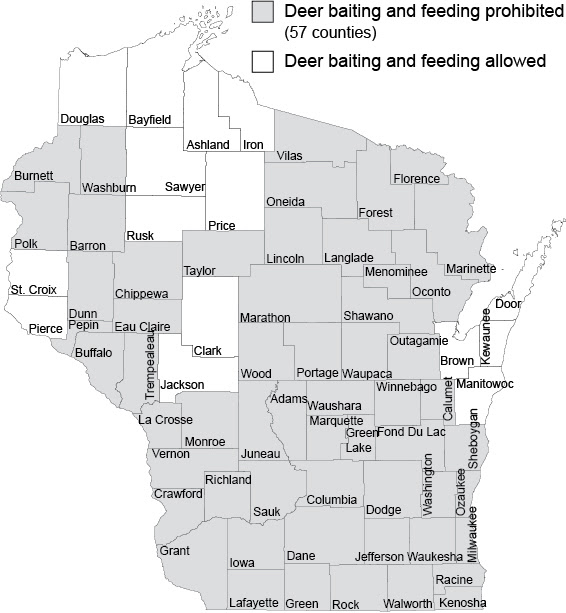
In counties where baiting and feeding is allowed, the following precautions should be taken when feeding birds and small mammals:
- Feeding devices and structures are at a sufficient height or design to prevent access by deer
- Make sure feeding structures and devices are no further than 50 yards from a dwelling devoted to human occupancy
- If deer, bear, or elk are using bird feeding devices or structures, the devices or structures shall be enclosed or elevated higher to prevent access
More information on Wisconsin's deer baiting and wildlife feeding regulations is available here.
Deer Carcass Disposal
With a successful harvest comes deer carcass waste. Proper carcass disposal helps slow the spread of CWD spread by removing potentially infected deer carcasses from the landscape. To properly dispose of deer carcass waste locate a designated dumpster, transfer station or landfill location accepting deer carcass waste near you on the DNR website.
The department does not recommend transporting whole deer carcasses to areas outside the county or adjacent county where the animal was harvested.
Chronic Wasting Disease (CWD)
CWD is a fatal disease that affects the nervous system of deer, elk, moose and caribou. The disease spreads through contact with an infected animal’s saliva, urine, feces and natural decomposition after death. The known CWD infectious agent, or prion, is very resistant to destruction, making it very difficult to contain. Because of this, baiting, feeding and improper carcass disposal increase the risk of transmission.
While there has not been a documented case of CWD in humans, the Wisconsin Department of Health Services, the Centers for Disease Control and World Health Organization recommend against consuming meat from CWD-infected deer. Infected deer can look healthy; however, the Department of Health Services (DHS) encourages testing for the disease regardless of your harvested deer’s physical condition. The DHS also recommends the public only consume venison from deer that is CWD negative.
To find a CWD sampling location near you where you can submit samples from Wisconsin harvested deer free of charge, visit the DNR’s “Sampling For Chronic Wasting Disease” webpage. Test results are usually available from the DNR within two weeks.
More information about CWD and how to prevent its spread is available on the DNR website here.
|
|
|
|
|
|
 |
| NEWS RELEASE: Incidental Take Notice For Grant County |
| 10/11/2021 |
| |
|
FOR IMMEDIATE RELEASE: Oct. 11, 2021
Contact: Stacy Rowe, DNR Conservation Biologist
stacy.rowe@wisconsin.gov or 608-228-9796
Incidental Take Notice For Grant County
MADISON, Wis. – The Wisconsin Department of Natural Resources (DNR) proposes to issue an authorization for the incidental taking of a rare snail, leafhopper and frog, which may result from the Cardinal-Hickory Creek 345kV Transmission Line Project – Segments W1 and W2.
Incidental take refers to the unintentional loss of individual endangered or threatened animals or plants that does not put the species' overall population at risk.
ITC Midwest LLC proposes to construct and operationalize the following Wisconsin facilities:
- New structures and foundations for the approximately 34-mile 345-kV transmission line extending between the Village of Cassville and the new intermediate 345/138-kV substation south of the Village of Montfort in Grant County, Wisconsin.
- Construction of temporary access paths along the 345-kV transmission line right-of-way (ROW) and off-ROW access paths where necessary.
The presence of the state threatened Wing Snaggletooth, state endangered leafhopper (Attenuipyga vanduzeei) and state endangered Blanchard’s cricket frog is confirmed in the vicinity of the project site. DNR staff determined that the proposed project may result in the incidental taking of some snails, leafhoppers and frogs.
The DNR concludes that the proposed project will minimize the impacts to the species by adhering to conservation measures; is not likely to jeopardize the continued existence and recovery of the state population of the species or the whole plant-animal community of which they are a part; and has benefit to the public health, safety or welfare that justifies the action.
Conservation measures to minimize the adverse effect on the threatened and endangered species will be incorporated into the proposed Incidental Take Authorization. Copies of the jeopardy assessment and background information on these species are available by visiting the DNR Incidental Take Public Notices webpage.
The public is encouraged to submit written or verbal comments regarding project-related impacts to the Wing Snaggletooth, Attenuipyga vanduzeei and Blanchard’s cricket frog by Nov. 10, 2021 to:
Department of Natural Resources
c/o Stacy Rowe, NH/6
101 S. Webster St. Madison, WI 53707
stacy.rowe@wi.gov or 608-228-9796
|
|
|
|
|
 |
| NEWS RELEASE: Incidental Take Notice For Columbia County |
| 10/12/2021 |
| |
|
FOR IMMEDIATE RELEASE: Oct.12, 2021
Contact: Rori Paloski, DNR Conservation Biologist
rori.paloski@wisconsin.gov or 608-516-3742
Incidental Take Notice For Columbia County
MADISON, Wis. – The Wisconsin Department of Natural Resources (DNR) proposes to issue a permit for the incidental taking of a rare lizard, which may result from the development of the Landscape Innovations Contractor Shop.
Incidental take refers to the unintentional loss of individual endangered or threatened animals or plants that does not put the species' overall population at risk.
Tjugum Investments LLC proposes to construct a 2,688 square foot shop and material storage yard for a landscaping contractor, resulting in a total project area of 1.84 acres.
The presence of the state endangered slender glass lizard is confirmed in the vicinity of the project site. DNR staff determined that the proposed project may result in the incidental taking of some lizards.
The DNR concludes that the proposed project is not likely to appreciably reduce the likelihood of the survival or recovery of the species within the state, the whole plant-animal community of which it is a part of or the habitat that is critical to its existence.
Conservation measures to minimize the adverse effect on the endangered species will be incorporated into the proposed Incidental Take Permit. Copies of the jeopardy assessment and background information on the slender glass lizard are available by visiting the DNR Incidental Take Public Notices webpage or upon request from DNR Conservation Biologist Rori Paloski at 608-516-3742 or rori.paloski@wisconsin.gov.
The public is encouraged to submit written or verbal comments regarding project-related impacts to the slender glass lizard by Oct. 26, 2021 to:
Department of Natural Resources
c/o Rori Paloski, DNR Conservation Biologist
101 S. Webster St. Madison, WI 53707
rori.paloski@wisconsin.gov or 608-516-3742
|
|
|
|
|
 |
| NEWS RELEASE: Plan Your Outdoor Fall Color Adventure |
| 10/13/2021 |
| |
|
FOR IMMEDIATE RELEASE: Oct. 13, 2021
Contact: DNR Office of Communications
DNRPress@wisconsin.gov
Plan Your Outdoor Fall Adventure
Plan your outdoor fall color adventure. / Photo Credit: iStock / Big Joe
MADISON, Wis. – Fall in Wisconsin is underway. Many scenic landscapes are starting to display vivid reds, oranges and yellows, offering a once-a-year color show like no other. With over 6 million acres of public lands, 49 state parks, 15 state forests and 44 state biking trails opportunities to view Wisconsin’s fall colors are bountiful.
Color changes typically occur in far northern Wisconsin during the last week of September and the first week of October, with colors peaking during mid-October in central Wisconsin and late October in southern Wisconsin.
Timing of the color change varies by species and weather conditions. Discover fall colors in Wisconsin with the official Travel Wisconsin Fall Color Report. Learn more about the science of fall colors on the Wisconsin Department of Natural Resources (DNR) website.
Explore Fall Favorites
Fall color enthusiasts can enjoy golden hour moments at these Wisconsin state park locations perfect for taking in peak color:
- Peninsula State Park (Fish Creek): Enjoy the beautiful changing leaves from Eagle Tower that features a new accessible observation tower and treetop ramp that allows visitors of all abilities to take in the breathtaking views.
- Wyalusing State Park (Bagley): Camp and explore 500 feet above the confluence of the Wisconsin and Mississippi rivers at one of Wisconsin's oldest state parks featuring hiking trails, a canoe trail, Native American burial mounds, bird watching, fishing, boating, bicycling and picnicking on bluff top overlooks.
- Kettle Moraine State Forest - Northern Unit (Campbellsport): Explore the world-famous glacial landforms at the first and largest unit of the Kettle Moraine State Forest and make a stop at the 60-foot Parnell Observation Tower for panoramic views from the highest point of elevation in the forest.
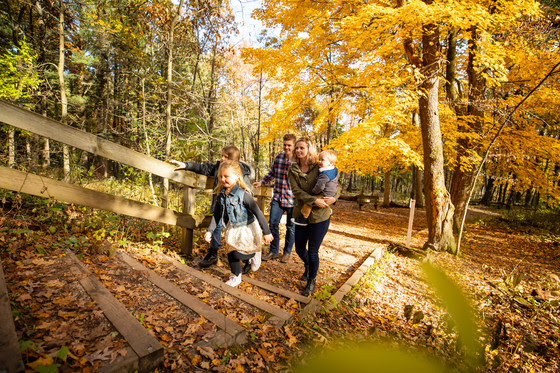
Take in fall colors during a scenic hike. / Photo Credit: Travel Wisconsin - Rachel Hershberger
Find Your Fall Adventure
Get the most out of fall color in Wisconsin and find your adventure with these tips:
- Check out Travel Wisconsin’s 11 scenic drives to experience fall or head out on foot to try these Wisconsin fall hikes with picture-perfect views, including at these additional state parks: Devil’s Lake, Interstate, Kettle Moraine Southern Unit, Perrot and Rib Mountain.
- Use the Find A Park online tool to search for parks based on activities they offer, amenities available and even find rental opportunities to try something new.
- Explore a Wisconsin state park hidden gem property for a fall outdoor experience that’s off the beaten path.
- Make the most of autumn by camping at a state property. Visit the DNR’s booking webpage to plan your stay.
- Drop a line and enjoy the fall views at one of the many fishing areas in the state.
- Get some fresh air by joining a nature study, attending a fall fest or participating in a volunteer cleanup. Check out the DNR’s Events calendar for a list of upcoming activities at state properties.
Plan Your Visit
Capacity closures may be in place at some properties to promote social distancing and to help provide a safe and enjoyable experience for visitors and protect wildlife and natural resources. Visitors are encouraged to check out their favorite properties during the week, early in the morning or later in the afternoons, or to visit a property that is new to them.
Before heading out, check to see if a state park or property has reached its capacity limit.
While enjoying Wisconsin’s state parks and other properties, visitors are expected to practice social distancing and follow the latest CDC guidelines.
Visit dnr.wisconsin.gov for more information and to plan a fall adventure.
|
|
|
|
|
 |
| NEWS RELEASE: 2021 Wisconsin Ring-Necked Pheasant Season Opens Oct. 16 |
| 10/13/2021 |
| |
|
FOR IMMEDIATE RELEASE: Oct. 13, 2021
Contact: Alaina Gerrits, DNR Wildlife Biologist
Alaina.Gerrits@wisconsin.gov or 715-508-1677
2021 Wisconsin Ring-Necked Pheasant Season
Opens Oct. 16

A ring-necked pheasant takes flight at Goose Lake State Wildlife Area. / Photo Credit: Wisconsin DNR
MADISON, Wis. – The Wisconsin Department of Natural Resources (DNR) wishes hunters luck and safety during the upcoming 2021 pheasant hunting season. The season opens statewide at 9 a.m. on Saturday, Oct. 16 and runs through Jan. 9, 2022.
Several other seasons also open Oct. 16, including bobwhite quail and Hungarian partridge statewide, and ruffed grouse in Zone B. Like pheasant, the bobwhite quail and Hungarian partridge seasons open at 9 a.m. on the first day of the season. The ruffed grouse season opens with the start of legal shooting hours.
"Pheasant hunting offers a fantastic means to work your hunting dog while also experiencing the unique grassland habitats spread across the southern part of the state,” said Alaina Gerrits, DNR Wildlife Biologist.
Pheasants are one of the most sought-after gamebirds in North America, and populations do best in the agricultural landscape of southern and western Wisconsin, provided there is grassland habitat present in sufficient quantities to meet their food and cover needs throughout the year.
The department continues to prioritize grassland habitat management and creation, especially in the southern half of the state where pheasants were historically abundant.
During the 2020-21 pheasant hunting season, an estimated 42,532 hunters went out in search of pheasants and reported harvesting approximately 272,000 birds.
Regulations
Hunters are required to purchase a 2021 Wisconsin pheasant stamp to pursue these birds, helping to fund habitat restoration that benefits pheasants and many other wildlife species. With stamp-funded revenue, the DNR creates and maintains the habitat required for pheasants to survive and reproduce year-round.
View full regulations and licensing requirements on the DNR website.
Pheasant Stocking Program
In addition to wild pheasant hunting opportunities, the DNR wildlife management staff plan to release approximately 75,000 pheasants from the state game farm on more than 88 public properties. The department will expand its Pheasant Holiday Stocking from 8 to 25 state-owned properties to increase opportunities for pheasant hunters and families to safely enjoy a late season pheasant hunt. Barring any weather issues, the department plans to stock these properties over a two-day period during the week of Dec. 20, 2021.
Where To Hunt
The DNR’s free Hunt Wild Wisconsin mobile app includes a map layer showing where pheasants are stocked on public lands. In addition to using it to locate great pheasant hunting opportunities, you can also view the regulations and buy your license.
Hunters can also use FFLIGHT, the DNR's gamebird mapping web application, to locate and explore properties stocked with pheasants, as well as ruffed grouse and woodcock habitat and managed dove fields. FFLIGHT allows hunters to use aerial maps, topography and measuring tools to easily navigate and identify areas of interest and make their trips more productive and enjoyable.
Land enrolled in the Voluntary Public Access Program (VPA) is open to public hunting this pheasant season. The VPA Program has more than 30,000 acres of private land open to public hunting, fishing and bird watching year-round. Many properties are located within a short driving distance of urban areas and are popular pheasant hunting spots.
Mentored Hunting Program
The Mentored Hunting Program allows any hunter born on or after Jan. 1, 1973, to obtain a hunting license and hunt without first completing Hunter Education, provided they hunt with a mentor and comply with all the requirements under the program. For additional information and the requirements of the program, click here.
For more information on the 2021 pheasant hunt, visit this DNR website.
|
|
|
|
|
 |
| NEWS RELEASE: DNR Seeking Public Comment On Economic Impacts Of Proposed Whitefish And Electronic Reporting Rule |
| 10/13/2021 |
| |
|
FOR IMMEDIATE RELEASE: Oct. 13, 2021
Contact: Brad Eggold, DNR Great Lakes District Fisheries Supervisor
Bradley.Eggold@wisconsin.gov or 414-303-0138
Meredith Penthorn, DNR Fisheries Policy Specialist
Meredith.Penthorn@wisconsin.gov or 608-316-0080
DNR Seeking Public Comment On Economic Impacts
Of Proposed Whitefish And Electronic Reporting Rule
MADISON, Wis. – The Wisconsin Department of Natural Resources (DNR) is seeking public comments on the economic impacts of a proposed permanent rule relating to whitefish commercial harvest in Lake Michigan (including Green Bay), and electronic harvest reporting for all Lake Michigan and Lake Superior commercial fishers. Comments will be accepted until Nov. 11.
This rule revises the total allowable commercial harvest for Green Bay and Lake Michigan to reflect lake whitefish population abundance and distribution. It also establishes how the harvest for Green Bay and Lake Michigan will be divided between the three zones of Lake Michigan and implements a harvest cap mechanism for Zone 2 to prevent overharvest while still allowing commercial fishing throughout the zone.
The rule would also create a new restricted area for trap nets set for whitefish in southern Green Bay. In addition, it would require commercial fishers in Lake Michigan and Green Bay to report the location and name of trap nets set for whitefish.
Daily electronic harvest reporting for all Lake Michigan and Lake Superior commercial fishers would also be required, making reporting quicker and more accurate than biweekly paper reporting. There would also be an option for fishers to first record the information on a paper form before entering it into the electronic harvest reporting system by the end of the day.
Comments on the potential economic impacts of this rule will help the DNR enhance the economic impact analysis on the rule’s potential economic effects.
To view the full text of the draft rule, click here.
To view the economic impact analysis, click here.
Please submit comments by email to Meredith.Penthorn@wisconsin.gov by Nov. 11.
|
|
|
|
|
 |
| NEWS RELEASE: Know Your Target: Don’t Accidentally Shoot Elk & Moose This Hunting Season |
| 10/14/2021 |
| |
|
FOR IMMEDIATE RELEASE: Oct. 14, 2021
Contact: DNR Office of Communications
DNRPress@wisconsin.gov
Know Your Target: Don’t Accidentally Shoot
Elk & Moose This Hunting Season

Don't shoot an elk during gun deer season. Know your target. / Photo Credit: Wisconsin DNR & iStock/rogertrentham
MADISON, Wis. – The Wisconsin Department of Natural Resources (DNR) reminds hunters to know their target before they shoot and understand the difference between elk and white-tailed deer this season.
Archery and crossbow deer seasons are currently underway. Antlerless elk are most commonly confused for being large does, in addition to young bull elk which can look similar to large bucks. Any elk taken without a tag may result in a fine and a revocation of your hunting license.
How To Identify An Elk:
- Adult elk are larger than adult deer. An adult elk stands about 1-2 feet taller than an adult deer at the shoulders. An elk calf will be about the same size as an adult white-tailed doe but will display similar coloration to adult elk.
- Spot the difference in the antlers. White-tailed antlers curve forward, whereas elk antlers are larger and sweep back from their heads.
- Look for color markings. Elk have a tan rump patch, black legs and a dark brown mane. Deer have legs the same color as their bodies, a white throat patch and a fluffy white tail.
- Additional markers. Elk moving throughout the state may have noticeable markers including numeric ear tags or tracking collars. These collars are fixed around the neck and typically orange in collar, sometimes with a visible printed number.
Learn about the differences between elk and white-tailed deer below using the DNR’s comparison guide.
Although Wisconsin has not reintroduced moose, there are several verified moose sightings across northern Wisconsin each year. A few hunters may even be lucky enough to see one this fall.
Find your adventure during the upcoming nine-day gun deer season Nov. 20-28, 2021. Use the DNR's free Hunt Wild Wisconsin mobile app for everything needed in the field from property boundaries to chronic wasting disease (CWD) sampling and deer carcass disposal locations and electronic regulations, including shooting hours.
Discover new public lands to explore, brush up on the regulations or listen to podcasts within the Hunt Wild Wisconsin app. With mobile mapping, up-to-the-minute shooting hours, and much more, all the tools are available so hunters can focus on enjoying their time outdoors.
Once widespread across North America, elk were eliminated from Wisconsin in the 1880s. Thanks to the support of many partners and the backing of Wisconsinites, elk were reintroduced within the state in 1995. Through DNR efforts to reestablish the species, the elk herd continues to expand making it essential for hunters to know their target to protect this growing population.
Currently, there are two herds containing a total of more than 400 elk in Wisconsin reintroduction areas: one in the north including Ashland, Bayfield, Price, Rusk and Sawyer counties, and one in the area surrounding Jackson County. Occasionally, elk can roam beyond these areas so it is important for deer hunters statewide to be sure of their target.
Observations of elk outside of the management zones, or moose can be reported to the Wisconsin Department of Natural Resources through the Large Mammal Observation Form.
Hunters should follow all firearm safety rules and be sure of their target and what is beyond it. Positively identifying the target ensures the safety of other people and avoids the accidental shooting of non-target animals.
|
|
|
|
|
 |
| NEWS RELEASE: DNR Increased Prescribed Burns During Late Summer |
| 10/14/2021 |
| |
|
FOR IMMEDIATE RELEASE: Oct. 14, 2021
Contact: Carly Lapin, DNR North Central Field Ecologist Carly.Lapin@wisconsin.gov or 715-493-0991
DNR Increased Prescribed Burns During Late Summer
Burns Ignite Restoration Progress At Rare Northern Ecosystems

DNR burn crews conducted prescribed burns in late summer at several state properties, including Perry/Primrose Bird Conservation Area in Dane County shown here. / Photo Credit: Michael Kienitz
NIAGARA, Wis. – The Wisconsin Department of Natural Resources (DNR) increased prescribed burning during late summer to restore and maintain several state properties.
Prescribed burns are the intentional application of fire to a pre-planned area, under specific environmental conditions, to help conserve Wisconsin native grassland, wetland and savanna plant communities. Fire is a natural and necessary component of ecosystems such as native prairies, oak openings and pine and oak barrens. Periodic fire is required for regeneration and growth of fire-adapted species within these systems.
The DNR conducts prescribed burns to reduce wildfire fuels, reduce invasive plant species, stimulate wildflowers and grasses, control brush and improve habitat for local wildlife.
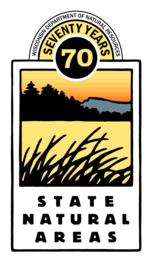
Prescribed Burning At Spread Eagle Barrens State Natural Area
The DNR increased use of prescribed burns at Spread Eagle Barrens State Natural Area in Florence County during native plant growing season in late summer.
Historically, prescribed burns have occurred in the spring at Spread Eagle Barrens and other State Natural Areas. As part of the DNR’s efforts to increase prescribed burns in the area, on Aug. 17, 2021, a prescribed burn was conducted to help maintain the state and globally imperiled bracken grasslands and pine barrens on-site.
“Our goal was to get 50% of the acreage in the planned area to burn, and we achieved nearly 60%,” said Carly Lapin, DNR Field Ecologist. “As a result, we hope that the barrens structure will improve, and plant diversity will increase as more growing season burns are implemented.”
In addition to Spread Eagle Barrens, DNR staff conducted growing season prescribed burns in late summer at Namekagon Barrens in Burnett and Washburn counties, Crex Meadows in Burnett County and at the Perry/Primrose Bird Conservation Area in Dane County.
The DNR does not plan to switch exclusively to prescribed burning during late summer growing season at Spread Eagle Barrens or other state properties. The department will use prescribed fire when it’s the right tool for management.
|
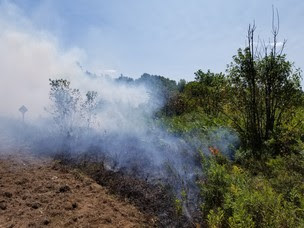
Spread Eagle Barrens Is Home To Globally Rare Ecosystems Dependent On Fire
Spread Eagle Barrens, a 7,155-acre State Natural Area managed in conjunction with We Energies’ Kingsford Dam project area, protects an extensive landscape of bracken grassland and pine barrens.
Spread Eagle Barrens also has several other natural community types important for rare animals, especially birds, butterflies, bees and other invertebrates, and common animals like turkey, deer and grouse.
Bracken ferns, sedges, brome and bluegrass dominate the grasslands. Pine barrens are a globally rare natural community type; about two-tenths of 1% of Wisconsin’s pine barrens acreage estimated in the early 1800s remains on today’s landscape.
Such natural communities evolved with fire and need it to perpetuate over time. Without fire, the structure and species composition of a plant community changes. As a result, invasive plants and woody species can overwhelm the site, and faster-growing species like maple can shade out slower-growing seedlings like oak.
Fire also removes accumulated leaf and grass litter and invading brush, stimulating the growth of native plant species and maintaining the open character of these systems. Prescribed burning also returns nutrients to the soil benefiting the entire plant community.
|

DNR burn crews conducting a prescribed burn at the Perry/Primrose Bird Conservation Area in Dane County. / Photo Credit: Michael Kienitz
Research Shows Benefits From Growing Season Prescribed Burns
An increasing number of studies across the upper Midwest including research conducted by DNR Research Scientist, Jed Meunier, suggests that spring may not be the most effective time to conduct prescribed burns to achieve brush control. In fact, some data show spring burning can cause up to a two-fold increase in re-sprouts on some of the woody plants targeted for control.
The DNR would like to continue conducting prescribed burns during the growing season for the following reasons:
- In spring, conditions can be too wet or dry to burn. Burning in the summer gives the DNR additional opportunities to use prescribed burns as a management tool. This shift in timing is important as climate change may reduce the chance to conduct burns during the spring.
- Burning in the summer ensures that wildlife species more sensitive to spring burns, including those whose young may be less mobile and at greater risk of perishing in spring fires, have more opportunities to thrive in the habitat they need and avoid direct mortality.
- Varying the timing of burning means that different species have a chance to respond after each burn, increasing plant diversity.
To determine if a summer prescribed burn is the right tool for the time frame, DNR field ecologists, forestry and wildlife management staff will identify a site’s known plant and animal species, especially rare species, to understand how a summer burn might impact them based on established avoidance dates or state/national guidelines. They will also assess potential issues related to smoke production from the fire during that time of year.
To view planned, current and past prescribed burns visit the DNR’s Prescribed Fire Dashboard.
|
|
|
|
|
 |
| NEWS RELEASE: Wisconsin NRB Meeting Oct. 27 |
| 10/14/2021 |
| |
|
FOR IMMEDIATE RELEASE: Oct. 14, 2021
Contact: Laurie Ross, NRB Board Liaison
Laurie.Ross@wisconsin.gov or 608-267-7420
DNR Office of Communications
DNRPress@wisconsin.gov
Wisconsin NRB Meeting Oct. 27
Deadline For Remote Appearance Requests And Written Comments
11 a.m. Oct. 20
MADISON, Wis. – The Wisconsin Natural Resources Board will meet in-person for the October board meeting to consider several proposed rules, hearings, management and master plans, land items and donations.
The meeting will begin at 8:30 a.m. on Wednesday, Oct. 27, 2021, originating from Public Meeting Room G09, at the State Natural Resources Building (GEF 2), 101 South Webster Street, Madison, Wisconsin. The Board will act on items 1-4 and 7-8 as listed on the Agenda.
The public is encouraged to watch the October board meeting on the DNR’s YouTube channel.
The deadline to register for remote public appearance requests and to submit written comments is 11 a.m. on Wednesday, Oct. 20, 2021. There will be no in-person public appearances.
During the October meeting, the Board will be considering:
- Approval of brief of action from Aug. 11, 2021
- Approval of hunting and trapping prohibitions on 9.8 acres to be purchased with Knowles-Nelson Stewardship grant funds for the Ice Age Trail, Town of New Hope, Portage County
- Statement of Scope, public hearing notice of submittal of proposed rules related to Wisconsin DNR property management regulations
- Statement of Scope, public hearing notice of submittal of proposed rules related to nitrogen compound emissions regulations
- Proposed rules to revise chapters NR 500, 502 and 520 and create chapter NR 530 for the purpose of implementing electronics recycling program requirements
- Proposed rules affecting chapter NR 20 related to lake trout harvest and season in Lake Michigan
- Proposed rules affecting chapter NR 25 related to Lake Michigan whitefish management
- Proposed rules affecting chapters NR 19-23 and 26 related to minor changes to fishing regulations on inland, outlying and boundary waters
- Proposed rules affecting chapter NR 10 related to establishing the 2021 migratory bird season framework and regulations
- Statement of Scope, public hearing notice of submittal of proposed rules related to Legislative Council Rules Clearinghouse, for proposed rules affecting chapter NR 102 related to site-specific phosphorus criteria for Lac Courte Oreilles
The complete October NRB meeting agenda is available on the DNR website here.
In addition to being encouraged to watch the upcoming October meeting, there are opportunities for the public to testify and to submit written comments about issues that come before the NRB. More information regarding public participation at Board meetings is available here.
|
|
|
|
|
 |
| NEWS RELEASE: Celebrate Wisconsin’s Working Forests During Forest Products Week Oct. 17 - 23 |
| 10/15/2021 |
| |
|
FOR IMMEDIATE RELEASE: Oct. 15, 2021
Contact: Collin Buntrock, DNR Forest Products Team Leader
Collin.Buntrock@wisconsin.gov or 608-286-9083
Celebrate Wisconsin’s Working Forests
During Forest Products Week Oct. 17 - 23

Forests provide more than 64,000 jobs for Wisconsin residents. Here a DNR forest products specialist is scaling logs. / Photo Credit: Wisconsin DNR
MADISON, Wis. – Join the Wisconsin Department of Natural Resources (DNR) in celebrating the state’s working forests during Forest Products Week Oct. 17 – 23.
Gov. Tony Evers proclaimed the third week in October as Forest Products Week in Wisconsin to recognize forests’ essential role in the state’s environment and economy.
“The forest products industry contributes $24.5 billion in goods and services and provides $7.1 billion in value-added each year,” said Collin Buntrock, DNR forest products team leader. “On top of the monetary contribution to the state’s economy, the industry accounts for 3.8% of state output with 64,000 jobs directly contributed and represents almost 12% of total manufacturing jobs. In 31 counties, the forest products industry is one of the top ten employers.”
Forest Products Week highlights the importance of Wisconsin’s 17 million acres of forested land – both public and private – that provide raw materials to the forest products industry, recreational opportunities and ecosystem. Through the DNR’s use of sustainable forestry practices, trees are grown and harvested responsibly ensuring the economic, social and ecological benefits of the forest products industry.
Every 10 jobs in the forest products industry support an additional 13 jobs in other sectors in the state. Wisconsin is also the top paper producing state in the country and 1,200 state-wide businesses are reliant on the natural resource for commercial products. Learn more about forestry and the Wisconsin economy here.
In addition to the impact on the state’s economy, Wisconsin’s forests and forest products industry provide environmental benefits. Forests help store carbon, which offsets greenhouse gas emissions. Even after trees have been harvested and turned into forest products, they continue to retain the carbon they stored while living.
“Forest products are used daily, and you may not even realize it,” said Buntrock. “Products such as lumber help us build houses, furniture and swing sets, while other forest products are used to make paper, toothpaste and chewing gum. These are just a few examples of the thousands of forest products people use each day. It all starts in the forest.”
Learn more about the forest products industry and its benefits on the DNR website.
|
|
|
|
|
 |
| DNR’s Go Wild License And Registration System Recognized For Digital Excellence |
| 10/15/2021 |
| |
|
FOR IMMEDIATE RELEASE: Oct. 15, 2021
Contact: DNR Office of Communications
DNRPress@wisconsin.gov
DNR's Go Wild License And Registration System Recognized For Digital Excellence
MADISON, Wis. – The Wisconsin Department of Natural Resources (DNR) today announced the department received digital excellence awards for the Go Wild license and registration online portal.
|
Out of thousands of entries from around the world, the Go Wild system earned a 2021 w3 and dotCOMM Gold Award for outstanding websites and digital content.
Earlier this year, the Go Wild system also earned a 2021 Communicator Award of Distinction and a 2021 Gold Hermes Creative Award in recognition of the system’s ease of use. Only 20% of international entries receive a “Gold” award distinction by the Association of Marketing and Communication Professionals who administer the Hermes Creative Awards competition.
|
|
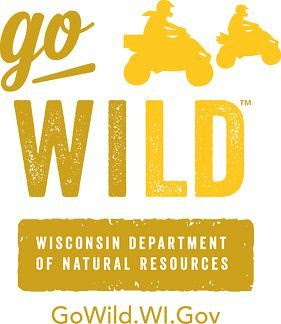 |
“This recognition is a testament to the hard work and collaboration that has gone into making the Go Wild online system a one-stop shop for Wisconsin outdoor recreation licenses, management and education,” said Steven Little, DNR Assistant Deputy Secretary. “We’re committed to providing a quality online platform for outdoor enthusiasts so they can spend more time enjoying our state’s natural resources.”
The DNR launched Go Wild in 2016 in partnership with NIC Wisconsin, a subsidiary of Tyler Technologies, to provide Wisconsin’s outdoor enthusiasts an easy-to-use online option to obtain fishing and hunting licenses, register for safety education courses and manage their boats, ATVs and other off-road vehicles through an efficient online experience. In 2021, Go Wild has processed more than 1.4 million transactions online.
“We are excited to see the Go Wild system being nationally recognized for a fourth time in 2021. As more and more people choose to use the system, our partnership with the DNR will continue to concentrate on making customers’ online experiences quick and hassle-free,” said Nicole Randol, General Manager of NIC Wisconsin.
The w3 Awards are sanctioned and judged by the Academy of Interactive and Visual Arts, an invitation-only body consisting of top-tier media, advertising and marketing professionals. The Awards recognize digital excellence in websites, marketing, video, mobile sites, apps, social and podcasts, and is the first major competition to be accessible to agencies of all sizes. This year, there were over 3,000 nominations submitted.
The dotCOMM Awards is an international competition honoring excellence in web creativity and digital communication. The Association of Marketing and Communication Professionals, an international organization that oversees awards and recognition programs and honors outstanding achievement and service to the profession, administers the awards. This year, there were over 2,500 nominations, with only 18% receiving a Gold Award.
|
|
|
|
|
